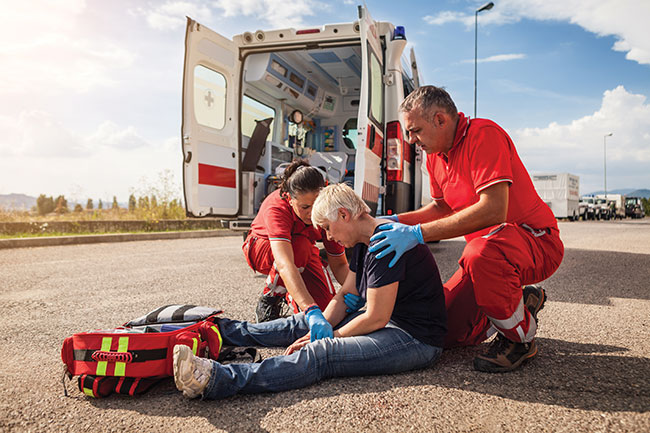
Features
Health & Safety
Health & Safety: Getting employees back to work safely after they’ve suffered an injury is crucial
A return-to-work program is essential
February 16, 2024 By CCOHS
 A worker who suffers an on-the-job injury must be able to safely return to
the workplace.
Photo credit: Piola666/Getty Images
A worker who suffers an on-the-job injury must be able to safely return to
the workplace.
Photo credit: Piola666/Getty Images Absences can have a noticeable impact on the workplace. Workers may feel pressure to return to their jobs before they’re ready so they can support their colleagues or eliminate any perceived risk to their employment. That’s why having a return-to-work program is an essential tool. It provides managers with a template to navigate the return-to-work process and gives workers the support they need to return safely.
What to include in a return-to-work program
Your program should include a clear policy statement specifying its scope, principles, and intent. It should also outline expectations for communication and participation throughout the process by both the employer and worker, as well as include any requirements under workers’ compensation and human rights legislation for return to work. The program should be developed with input from labour, management, and union members (if applicable) from all areas of the organization. Reviewing the program regularly for legislative changes and for any opportunities for improvement that come up is also recommended.
All injured workers must be treated fairly. Make sure the program outlines the responsibilities of everyone involved in the return-to-work process, including healthcare providers, human resources, managers, and the worker. Focus on recovery, rehabilitation and returning the worker to their pre-injury position, or one comparable in function and income. While every effort should be made to return workers to their pre-injury position, some workers never fully recover from their injuries.
They will need to be transferred to a new role, which could involve a shift in responsibilities requiring additional education and training. Outline how workers may be accommodated, with clear transition steps, in your program.
All staff need to understand the program and how to access the information. Provide an overview during health and safety or human resources orientations for new workers so that everyone knows what to expect in the event of an injury or illness.
Reach out early and often
Feeling an ongoing connection to the workplace throughout a recovery is important. Contact the injured worker as early as possible to discuss next steps. Be considerate of the financial and psychological impacts they may be experiencing, such as a possible reduction in income or delay in payments, rehabilitation and getting to and from appointments, life, family disruption, and strained or changing relationships with co-workers.
The safety of the worker should always be the first consideration.
Returning to work too soon can increase the risk of re-injury; however, the longer the worker is away from work, the less likely they are to return to their job.
Show your concern, have empathy, be understanding when addressing their issues, and reassure them that you will be working together on their return-to-work plan.
The return-to-work plan
The return-to-work plan – an individualized, written action plan outlining the steps to keep the worker employed and working toward a safe return – should focus on their current functional and cognitive abilities. Every step may not go as planned, so be flexible and allow for revisions.
Focus on safe, meaningful, and productive duties while balancing the needs of both the workplace and the injured individual. The physical and mental demands of the job can be shared with the worker’s healthcare professional to ensure they are a good match for their current abilities.
Document the offer of suitable work, listing details of the duties or tasks that are available for the worker. If they’re unable to perform their usual tasks, identify any modified tasks they can do.
The employer has a responsibility to offer reasonable accommodation to the point of undue hardship. Workers are expected to be co-operative and reasonable when considering proposals and should not make unrealistic accommodation demands.
Any support that will be provided or made available to the worker should also be documented. Include milestone dates, times, tasks, and expectations, and involve the injured worker throughout the return-to-work process.
The Canadian Centre for Occupational Health and Safety (CCOHS) promotes the total well being of workers in Canada by providing information, training, education, systems and solutions that support health and safety programs and injury and illness prevention.
www.ccohs.ca
Print this page